Chimney Sweep Cost
Last updated 24th July, 2024
Need to sort out the soot? Looking for a typical chimney sweep cost?
This article discusses all things chimney cleaning and explores the costs involved with having your chimney swept. How often should you sweep your chimney? How long does a sweep take? We explore these questions and more, as well as discuss how much the job will cost including supplies and labour fees.
Continue reading for more information!
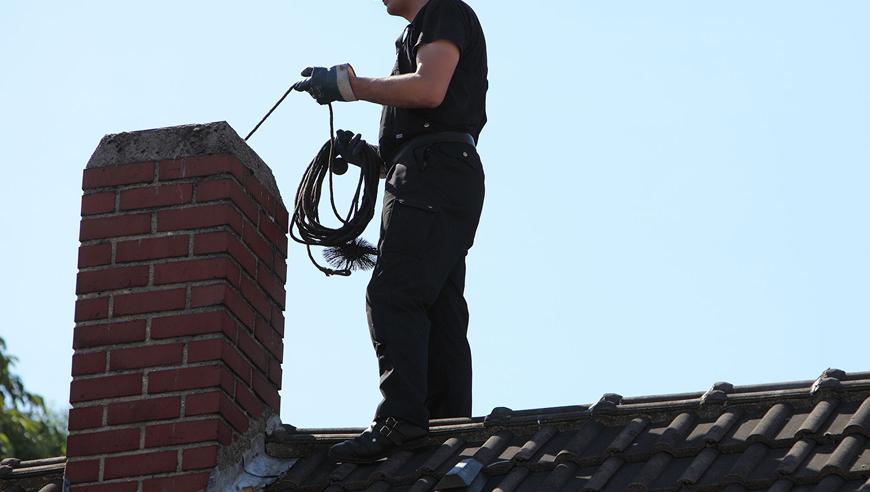
How Much is a Chimney Sweep?
The average cost to have your chimney swept is usually around £70 - £120, although prices will obviously depend on several factors such as the type of appliance or chimney, the time it will take to complete the cleaning, plus the location and ease of access.
The cost to sweep a typical open fire chimney starts from £80, while a lined stove chimney ranges from £80 to £150.
One of the most difficult types of chimney to sweep is an unlined chimney which costs around £80 or more, depending on its condition and often its degree of maintenance.
Chimney Sweep Prices
Here is an average chimney sweep cost for common chimney types:
| CHIMNEY TYPE | AVG. COST |
|---|---|
| Open fire chimney | £60 to £100 |
| Lined stove chimney | £80 to £120 |
| Unlined stove chimney | £90 to £150 |
Additional Costs
There are various other costs you need to consider when having your chimney swept including:
| DESCRIPTION | AVG. COST |
|---|---|
| Chimney lining | £150 to £250 |
| Log burner | £300 to £4000 |
| Gas fire | £160 to £1000 |
| New hearth | £50 to £300 |
| Fire guard | £20 to £250 |
Cost Breakdown Calculator
Individual costs for having your open fire chimney swept - Total Cost: £90
Materials
£0
Tradesman
£81
Clean Up
£9
Labour Costs and Time Frames
It usually only takes around an hour for an experienced chimney sweep to complete the job.
How much does a chimney sweep cost? Well, they usually charge around £60 to complete a budget sweep for an open fire chimney, while an unlined chimney could take two hours or more to sweep and can cost upwards of £90.
Time frames can increase, especially if there is a significant build of up creosote.
Chimney cleaning costs can increase, as tradesmen may charge extra for bird nest removal which can range from £100 to £120, usually with a sweep included.
This can actually take all day, depending on the accessibility to the chimney, as specialist equipment is required for this type of situation.
Your location will also determine the cost, as local chimney sweep prices in London cost up to £200 for a large business, while in northern areas, medium-sized business charge as little as £50.
Table of Contents
- How much does sweeping a chimney cost?
- Labour costs and time frames
- Cost affecting factors of sweeping a chimney
- What does sweeping a chimney entail?
- DIY chimney sweeping
- Do I need my chimney swept?
- Benefits of a chimney sweep
- How often should I sweep my chimney?
- Who are HETAS?
- What is chimney lining?
- How can I keep my chimney clean?
- Closing off a chimney
- Frequently asked questions
- How to find and hire a chimney sweep
- Sources
Cost Affecting Factors of Sweeping a Chimney
The cost of sweeping your chimney will vary depending on the type of chimney you have.
For example, a fairly cheap chimney sweep costs around £50 to £80 to clean an open fire chimney which should only take around an hour to complete.
A more difficult sweep would be for an unlined chimney which can cost up to £150. Other factors like bird nests will increase time frames and the overall cost.
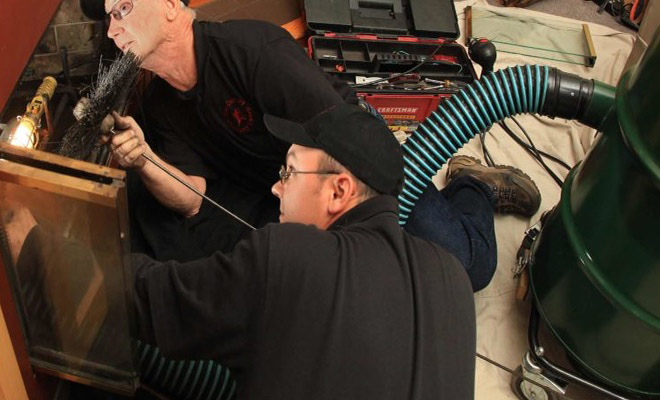
The type of fuel may also affect the price, as fuelling your fireplace with coal or wood tends to cause a significant build-up of creosote, which may require sweeping twice a year.
If you have more than one chimney, some companies will charge a specific rate per chimney, although some do offer discounts for multiple chimneys in one household.
There are many things which could go wrong when having your chimney swept thereby increasing the cost, particularly if using untrained local tradesmen.
The mess that can be created inside your home is incredible if the cleaning is not done properly, but in addition, if all the debris (and the cleaning rods) are not removed from the chimney, then you could be left with a potentially fatal situation if the chimney is blocked!
What Does Sweeping a Chimney Entail?
The following steps are involved when sweeping a wood burning chimney:*
1 - Preparation
Before sweeping the chimney, the professional you hire should cover the fireplace with protective sheeting which will then be vacuum-sealed and secured with duct tape.
They will then move the vacuum outside to collect the soot, making sure it has long connectors that allow it to stay attached to the fireplace. They will then close the doors and windows to prevent soot from entering the home.
2 - Cleaning
The tradesman will then move to the roof and use a chimney cleaning brush that will then be used to clean the flue on top of the chimney and remove any soot. Their colleague will then turn on the vacuum.
At this point, the person on the roof will then start to clean further down the chimney until brush resistance stops.
They will then move from the roof back to the fireplace to clean the smoke shelf and the fire box.
This will involve the use of a long-handle brush, which again, will remove any soot. The vacuum will then be used to clean out the contents of the firebox.
DIY Chimney Sweeping
If you have a standard, traditional, brick-built chimney, it’s not too difficult to clean the chimney yourself. Some people just use a set of drain rods instead of chimney sweeping rods.
However, insurance companies may not agree that your DIY chimney cleaning efforts are just as good as a professional chimney sweep, and, in the case of a chimney fire, they may be unwilling to pay out!
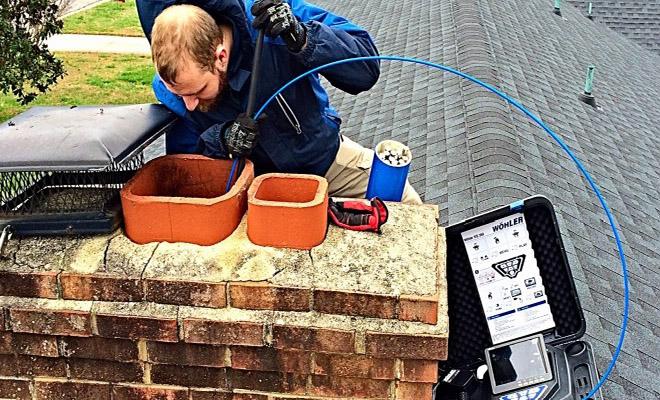
In addition, the consequences of a chimney leaking carbon monoxide into your home are potentially fatal, so ensuring your chimney is safe is not something to take lightly. If in doubt, use a qualified chimney sweep and have both chimney and fire checked regularly!
If you’re an experienced DIY enthusiast and have previously worked on a roof before, then you could sweep your chimney yourself. To do this, you will need the following equipment:
| EQUIPMENT | AVG. COST |
|---|---|
| Duct tape | £3 - £10 |
| Poly sheeting | £10 - £14 |
| Dust mask | £1 - £25 |
| Safety harness | £18 - £230 |
| Safety glasses | £1 - £14 |
| Flashlight | £1 - £45 |
| Shop vacuum | £35 - £300 |
| Drain rod set | £15 - £40 |
| Chimney brush | £8 - £15 |
Do I Need My Chimney Swept?
If you have a fireplace that burns gas, wood or coal, you will need to have it swept regularly.
This will prevent a build-up of soot, which, if left, could lead to carbon monoxide poisoning, chimney fires and smoke penetration.
If you notice that your fire is not burning as it normally does, then you may need your chimney sweeping.
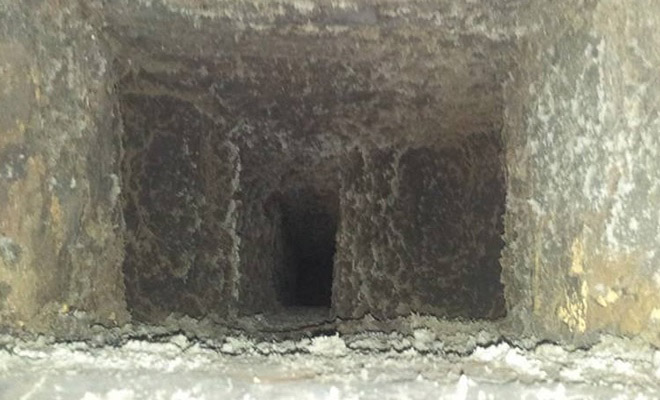
Other reasons may include strong odours from your fireplace, a build-up of smoke in your chimney, visible soot on your fireplace, or you may even hear the sounds of small animals who have nested in your chimney, blocking the flue and leaving droppings.
Benefits of a Chimney Sweep
There are a variety of benefits for having your chimney swept, including:
Health and Safety
One of the biggest advantages of having your chimney swept is that you can keep your home and family safe from toxic chemicals, such as carbon monoxide.
By having your chimney swept regularly, it will allow your chimney to work as it should, by releasing any harmful fumes from the home, making your home a safer and healthier place.
Efficient Heating
When you have a build-up of creosote in your chimney, it causes your fireplaces’ efficiency to decrease, and you will end up using more wood or coal to fuel your fire, which is not energy efficient.
The solution to this is a professional chimney sweep, who will clear your chimney of soot, allowing the air in your chimney to circulate as it should and warm up your home without using excessive amounts of fossil fuels.
Prevents Expensive Repairs
Leaving your chimney is not only dangerous and inefficient, it can also become costly, especially if you have a massive build-up of creosote.
By leaving soot and tar to build up in your chimney, this can lead to cracking and structural damage, which can be very expensive, so the more frequently you clean it, the better.
Prevent Blockages
If you have a chimney that burns fossil fuels, then soot residue will begin to build up and stick to the flue every time you light your fireplace. By sweeping your chimney, you can prevent creosote (soot and tar) from blocking your chimney.
The quicker you have it removed, the easier it will be, as any creosote that is left can become highly flammable, and can be hard to shift, so in this case, you would need a professional to remove it.
How Often Should I Sweep My Chimney?
Every chimney will have a recommended frequency of sweeping required which will depend on a number of factors, such as the type of fuel used, the appliance and the type of fuel burned.
According to HETAS, if you use wood or coal to fuel your chimney, then you should have it swept at least twice a year, while smokeless chimneys should be cleaned once a year.
However, you may need to have your chimney cleaned on a quarterly basis if you use it frequently. The best time to sweep your chimney is just before the heating season starts, which is usually around autumn time.
When sweeping twice a year, the second sweep should be done right after the peak of the heating season, which is normally around January.
Who are HETAS?
HETAS – the Heating Equipment Testing and Approvals Scheme – are an organisation that monitor the use of biomass and solid fuels to ensure they are safe and eco-efficient.
HETAS provides training to chimney sweeps, which provides them with a HETAS chimney sweep accreditation, enabling them to certify their own work in line with current building regulations.
This includes chimney sweeps who are members of the Association of Professional and Independent Chimney Sweeps (APICS), National Association of Chimney Sweeps (NACS), the Guild of Master Chimney Sweeps and Sweep Safe.
What is Chimney Lining?
Chimney lining, which costs around £150 to £250, is a fixture that is installed inside your chimney for safety and practical reasons.
This includes its ability to prevent fires, as the chimney liner protects the joints and masonry which stops the chimney from overheating, whilst also preventing corrosion from flue gases.
If you do not have a chimney liner or flue, then your chimney and home is more exposed to heat and smoke from a live fire. Gas leaks are also possible if your chimney starts to deteriorate.
Chimney liners are also beneficial for improving heat efficiency, as it helps to enhance air flow. This will enable you to use less fuel, whilst also preventing heat loss.
Flue liners can also make your chimney more low-maintenance, as a liner reduces soot build-up, and therefore it won’t need to be swept as often which will reduce the cost of chimney sweeps.
A professional chimney sweep will check the condition of the chimney at the same time and advise if a new liner is required.
Building regulations do not insist that you have a chimney liner installed in theory, but in practice, most chimneys will require one.
You should also get any appliances serviced and cleaned at the same time as the chimney itself.
How Can I Keep My Chimney Clean?
In between regular chimney sweep maintenance, you should try to clean your chimney and fireplace on a regular basis to prevent a massive build-up of soot, dirt and debris.
This will involve cleaning the fireplace and removing any dirt from the hearth, the fireplace surround and grate.
You should try to use fuel that creates less mess, such as low-moisture or dry firewood, as this produces less smoke and also burns more easily.
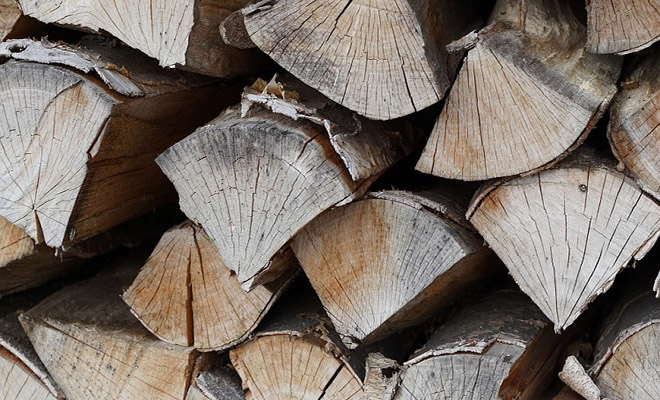
You should also make sure that you stack your wood with enough space for oxygen circulation, as this will offer you better heat-efficiency and less creosote build-up.
Another way to reduce soot deposits is by making sure the chimney flue is warm before lighting the fire. This can be achieved by rolling newspaper, lighting it and holding up to the chimney to warm the flue up.
Closing Off a Chimney
If you do not use your fireplace, then you may be losing heat out of your home, without getting the benefits of a heated fire. If this is the case, you could consider closing off your chimney for good, without having to pay for chimney removal.
Before closing off a chimney, you should hire a professional to inspect the chimney and repair any structural damage, and you should also have it swept before closing off the chimney, which tends to cost around £100 to £150.
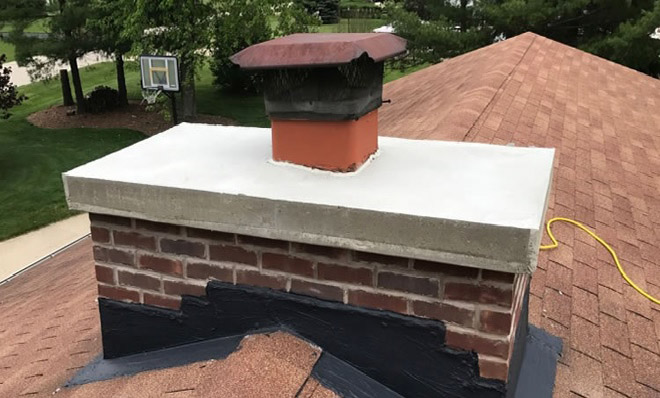
To close off the chimney, the cap needs to be removed, then the perimeter of the chimney top should be measured, follow by cutting a metal sheet to match the measurements of the chimney.
Rubber caulk will then be applied to all sides of the chimney before the metal sheet can be attached along with the chimney top.
The next step involves closing the fire damper inside your home. The top of the fireplace will then be measured, and a piece of foam insulation will be cut to match the circumference.
The foam will then be installed inside the chimney and rubber caulk will be used again on all sides of the insulation.
FAQs
For wood burning fires you should always use wood that has been properly seasoned over time to give out good clean heat. For coal burning fires or appliances, you should consult your manufacturer or local approved coal merchant for expert assistance.
Please note that in certain areas of the UK, the fuel choice is effectively made for you in smoke-free zones, so you must take this into consideration when selecting fuel.
You can have a fire in any open fireplace or stove, but any gas and boilers should all be turned off or put out at least 24 hours before the sweep is due to arrive, as they take a long time to cool down.
When a chimney is closed off, you can get problems with damp. Then any old soot left up there can turn to a black acidic slurry that can soak into the walls causing structural problems and unpleasant stains. So before closing off any chimney, have it professionally swept first to remove old soot deposits.
If you have not had your chimney swept for a few years, then you may even start to hear animal noises, especially from birds, who have a habit of nesting in chimney tops. You may also notice animal droppings surrounding your chimney or even the fireplace.
As far as obvious signs that the chimney needs cleaning, there are not always symptoms to look out for, which is why it is important to stick to a regular cleaning schedule.
It will also help your fireplace burn quicker, whilst preventing heat loss.
When hiring someone who is HETAS-certified, you will not have to apply for building regulations approval, as they are qualified to issue a building regulations certificate for the work they have completed.
How to Find and Hire a Chimney Sweep
To ensure that your chimney is safe and efficient, you should consider a professional chimney sweep, who will charge around £70 to £150.
Before hiring a chimney sweep, you should check their credentials, and also check if they are a member of HETAS, APICS, NACS, Sweeps Safe and the Guild of Master Chimney Sweeps. This will ensure that you hire someone with the right qualifications, who is also able to certify their own work and maintain building regulations compliance.
You should also always check a tradesman’s insurance before hiring them for the job, as they should have public liability insurance for protection against incident and damage, for their own sake and yours.
Sources
https://www.hetas.co.uk/when-chimney-swept/
http://www.stroudchimneysweeps.co.uk/hintsandtips.html
https://nacs.org.uk/advice/
https://mr-soot.com/services-price-list/
https://www.sweepchief.co.uk/gas-fire-flue-sweeping/
https://stovefitterswarehouse.co.uk/pages/how-to-choose-and-measure-for-your-chimney-liner
https://www.lektowoodfuels.co.uk/blogs/news/hiring-a-chimney-sweep










